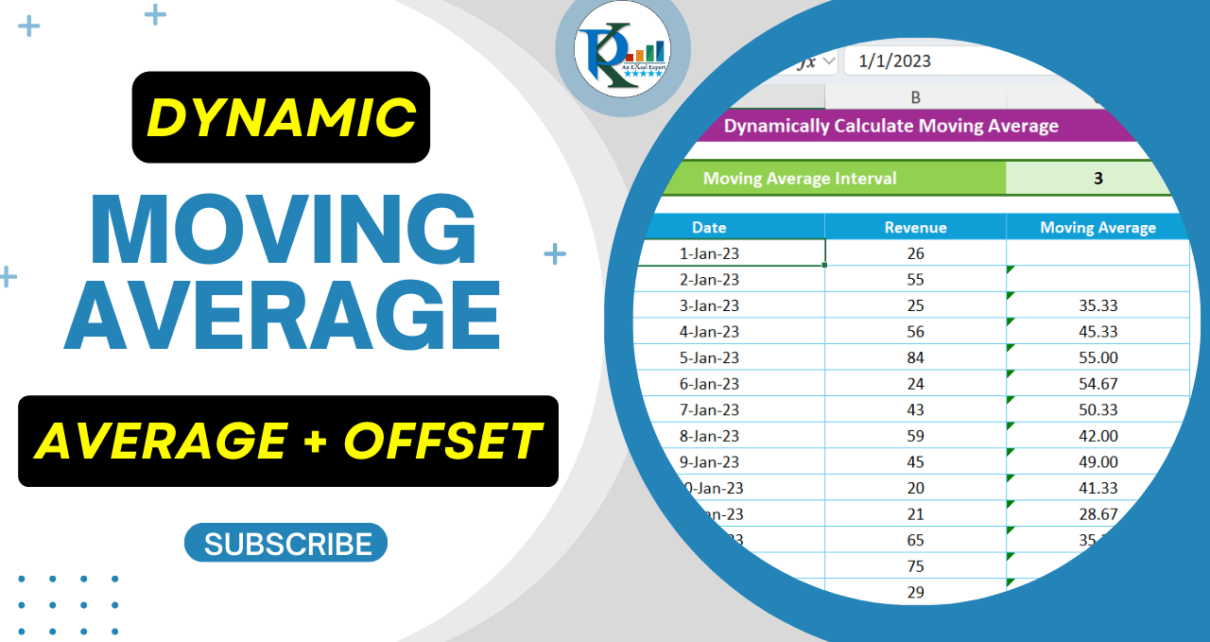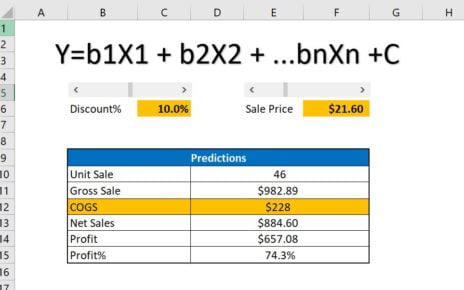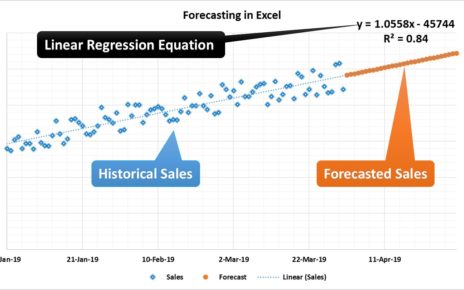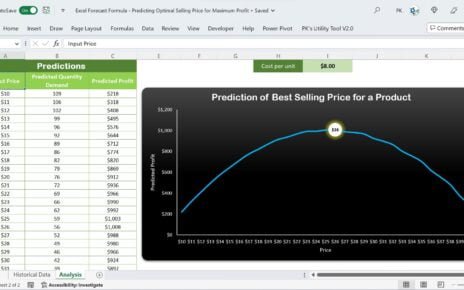As we delve into data analytics, we often find ourselves in need of tools that allow us to decipher trends and predict potential shifts. Among these tools, the Moving Average in Excel stands out. But first, let’s clarify what a moving average is and how to dynamically craft it in Excel.
So, What Exactly is a Moving Average in Excel?
Fundamentally, a moving average, often abbreviated as MA, smooths out short-term fluctuations to reveal long-term trends or cycles. By averaging data points over a specified period, it effectively reduces the ‘noise’ from random, short-term changes.
Why Should We Use Moving Averages in Data Analysis?
- Trend Recognition: Firstly, a moving average pinpoints the current trend direction. When data surpasses its moving average, an upward trend emerges, and conversely, when it dips below.
- Forecasting: Secondly, observing the shifts in moving averages can lead to astute predictions about future values.
- Refining Data: Lastly, they act as filters, stripping away the noise to present a clearer view of overarching trends.
Diving Deeper into Dynamic Moving Averages in Excel
Excel excels (pun intended!) with its expansive formula library. Among these, AVERAGE and OFFSET come into the limelight when we talk about dynamic moving averages.
The AVERAGE + OFFSET Pair: Why it’s Revolutionary
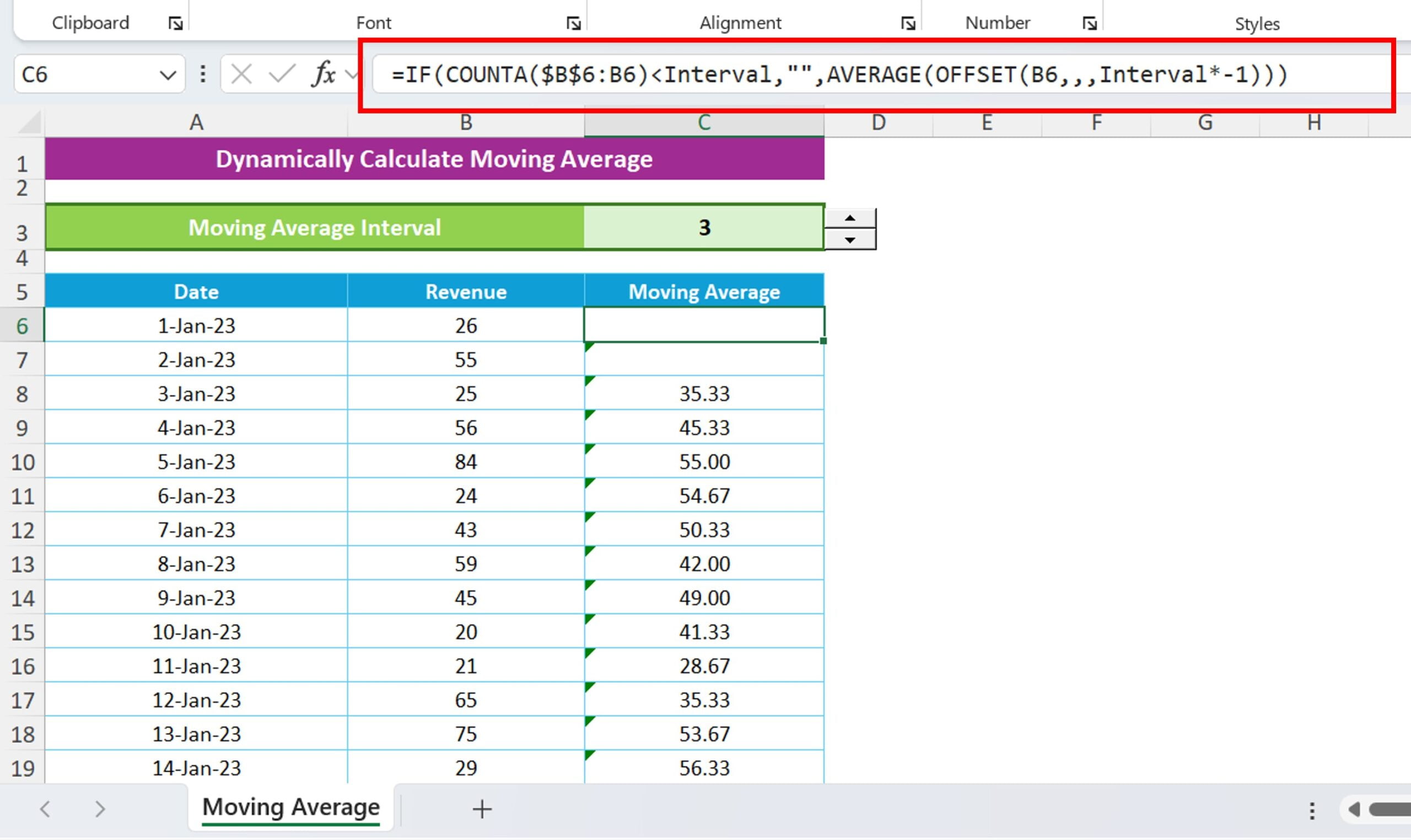
While AVERAGE is self-explanatory, OFFSET becomes the game-changer. It determines a range, commencing from a defined starting point and considers specified rows and columns. Together, they adapt the moving average based on any provided interval, such as 2, 3, 4, and so on.
Perks of Utilizing Dynamic Moving Averages in Excel
- Adaptability: First and foremost, adjusting intervals gives analysts the freedom to customize their approach based on dataset nuances.
- Real-time Reflection: Next, as you input fresh data, the average reshuffles itself, offering real-time insights.
- Efficiency: Lastly, once you’ve set it up, the formula autonomously recalculates, saving you manual recalibration time.
Best Practices using Dynamic Moving Averages
- Prioritize Data Accuracy: Firstly, it’s pivotal that your data source remains unblemished and current.
- Regular Overhauls: Next, it’s wise to revisit the Moving Average Interval periodically to ensure ongoing relevance.
- Empower Through Knowledge: Lastly, a well-informed team can harness the power of dynamic moving averages to its full extent.
Conclusion
As we transition into an era of data-driven decision-making, having tools like dynamic moving averages in our arsenal is indispensable. And with Excel’s vast capabilities, we’re not only equipped but empowered.
Frequently Pondered Queries
Q. How often should we adjust the Moving Average Interval?
Regular checks ensure you’re aligned with the evolving data landscape.
Q. Are there other formulas besides AVERAGE + OFFSET for dynamic MAs in Excel?
Indeed, Excel offers a plethora of options. However, the AVERAGE + OFFSET combo strikes a balance between simplicity and efficiency.
Q. Can we always bank on the accuracy of moving average forecasts?
While they offer substantial insights, they lean on past data. Thus, it’s wise to marry them with other forecasting techniques for a rounded analysis.
In conclusion, as we continue our journey in the vast realm of data, it’s essential to have tools like dynamic moving averages at our fingertips. And now, armed with this knowledge, you’re poised to tackle any data challenge that comes your way.
Visit our YouTube channel to learn step-by-step video tutorials
